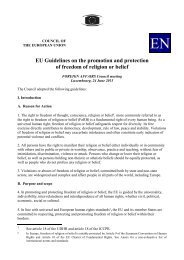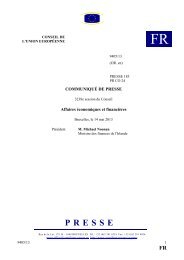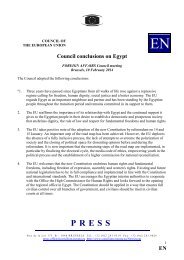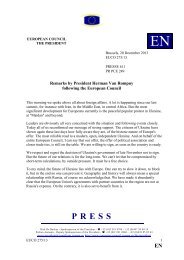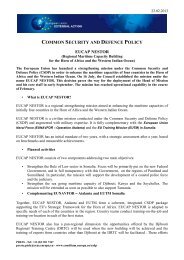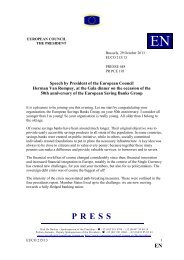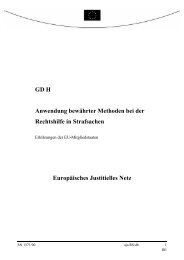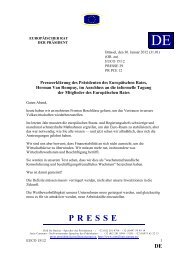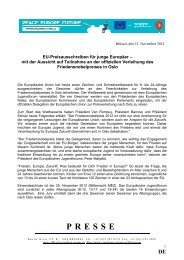Create successful ePaper yourself
Turn your PDF publications into a flip-book with our unique Google optimized e-Paper software.
Languages<br />
English is the official national language of Uganda. Luganda is the preferred ‘native language’. Other<br />
Bantu languages, Nilo-Saharan languages, Swahili, Arabic are commonly used.<br />
Ugandans tend to communicate more indirectly than directly. Stories, proverbs, and the like are common<br />
means of expressing a point indirectly. Greetings together with a large helping of ‘small talk’ almost<br />
always occur before talking about business. Additionally, humour plays a big role in communicating as<br />
most Ugandans enjoy a good joke.<br />
Population: 32,301,470 (January 2010 estimate)<br />
Age structure: 0 - 14 years: 50%, 15 - 64 years: 47.9%, 65 years<br />
and over: 2.1% (2009 estimate)<br />
Population growth rate: 2.69 (2009 est.)<br />
Birth rate: 48.15 births/1,000 population (2008 estimate)<br />
Death rate: 12.32 deaths/1,000 population (2008 estimate)<br />
Infant mortality rate: 64.82 deaths/1,000 live births (2009 estimate)<br />
Life expectancy at birth: Total population: 52.72 years, male: 51.66 years,<br />
female : 53.81 years (2009 estimate)<br />
Total fertility rate: 6.77 children born/woman (2009 estimate)<br />
HIV/AIDS: adult prevalence rate: 5.4% (2007 estimate),<br />
deaths: 77,000 (2007 estimate)<br />
Literacy rate: 66.8 %<br />
9<br />
Food<br />
Ugandan cuisine consists of<br />
traditional cooking with English,<br />
Arab and Asian (especially<br />
Indian) influences. Main dishes<br />
are usually centered on a sauce<br />
or stew of groundnuts, beans or<br />
meat.<br />
Starchy fillers traditionally<br />
come from Ugali (maize meal) or<br />
Matoke (boiled and mashed green<br />
banana).<br />
Soybean was promoted as a<br />
healthy food staple in the 1970s<br />
and this is also widely consumed,<br />
especially for breakfast. Also part<br />
of daily cuisine is cassava, yam,<br />
African sweet potatoes, rice and<br />
Chapatti, an Asian flatbread.<br />
Nyama, (Swahili word for "meat") would not necessarily be eaten every day. Fruits are plentiful and<br />
regularly eaten as snacks or dessert. Cakes, introduced by European travelers, are nowadays very<br />
popular amongst Ugandan society.



